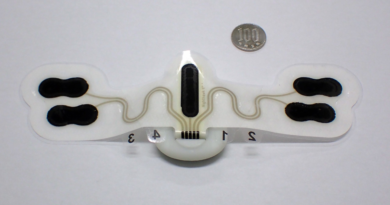Mitsubishi Electric trình diễn mô-đun nguồn sáng cho truyền thông quang học dung lượng cao trong không gian
News: Optoelectronics
21 June 2023
Tokyo-based Mitsubishi Electric Corp has demonstrated laser optical frequency control using a new light source module, a key component of a projected high-capacity laser optical communication network to be deployed in outer space.
The module, which produces a 1.5µm-wavelength signal, was installed in the OPTIMAL-1 nanosatellite (measuring 10cm x 10cm x 34cm) developed through an industry–academia collaboration led by ArkEdge Space Inc and joined by Pale Blue Inc, SEIREN Co Ltd, the University of Fukui, the School of Engineering at The University of Tokyo, and Mitsubishi Electric. OPTIMAL-1 was released from the Japanese Experiment Module ‘Kibo’ aboard the International Space Station (ISS) on 6 January. The use of a nanosatellite enabled the demonstration to be carried out faster and at lower cost than using a conventional large satellite.
Mitsubishi Electric has been developing space-based optical technologies that are expected to increase data capacity (by ten times or more) as well as communication speeds and distances compared with systems that use radio waves.
Satellite images are increasingly being used for purposes such as assessing conditions in post-disaster areas and the state of remote forestry resources. Existing radio-wave satellite communication systems are limited in terms of capacity, speed and distance, so new optical systems offering improved communications capabilities are required for faster and higher-resolution assessments from space. Advanced systems that use laser signals are expected to be increasingly adopted not only for their superior communications capabilities but also for using wavelengths shorter than radio waves, which allows the use of relatively small and easily installed terrestrial antennas.
Features include:
- The first optical frequency control test in space with a 1.5µm-wavelength laser light source module. Laser communication between satellites requires correction of the Doppler effect, which causes the laser optical frequency to change due to satellites moving at different speeds relative to each other. The new light source module was deployed in the world’s first demonstration of a laser frequency being adjusted by up to 60GHz in space, sufficient for Doppler effect compensation.
- Nanosatellite developed in industry–academia collaboration enables quick, low-cost demonstration.
By using a nanosatellite developed through an industry–academia collaboration project, the demonstration in space required only about one-third the time and one-hundredth the development cost of previous demonstrations in space performed by Mitsubishi Electric with large satellites.
“The development of nanosatellites has been gaining momentum in recent years,” notes ArkEdge Space Inc’s CEO Takayoshi Fukuyo. “Nanosatellites weighing just a few kilograms can be developed and launched for low cost, so they are expected to be used in new applications, such as widespread observations of Earth using numerous satellites. The successful demonstration of the light source module aboard the OPTIMAL-1 is expected to advance the deployment of nanosatellites.”
“Conditions in outer space, including radiation, vacuum and temperatures, create harsh environments for equipment, so demonstrating the capability to operate in space is crucial for the development of satellites,” says University of Fukui associate professor Yoshihide Aoyanagi. “I hope the successful demonstration of the OPTIMAL-1 will lead to further progress in industry’s use of nanosatellites.”
Future development
Mitsubishi Electric will propose the demonstrated technology for use in large-scale space development projects. The firm also intends to promote nanosatellites as an important demonstration platform for space-related R&D conducted through industry–academia collaborations. Mitsubishi Electric says that it will continue to pursue technological development aimed at the early realization of space-based laser optical communications.


